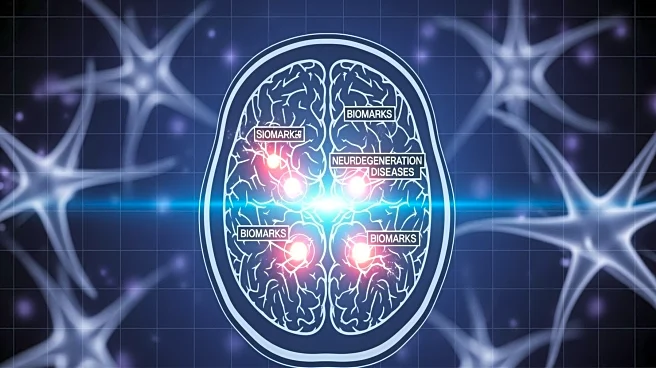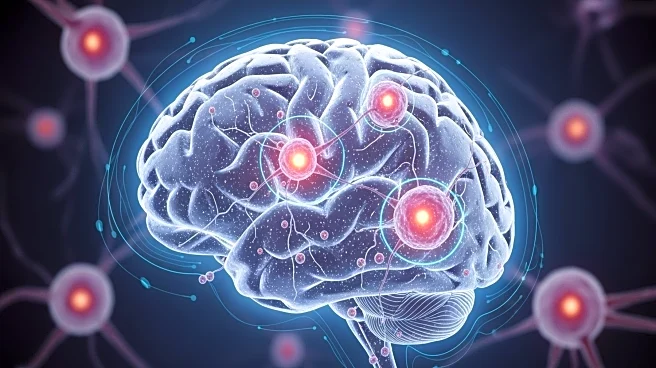What's Happening?
The NeuroToolKit project is utilizing data from multiple cohorts to identify clinically useful biomarkers for neurodegenerative diseases. This collaborative approach spans the entire Alzheimer's disease continuum,
incorporating studies from the ALFA+, Wisconsin, and Abby/Blaze cohorts. Biomarkers such as neurofilament light, amyloid-beta, and tau are being measured using advanced immunoassays, providing insights into disease progression and cognitive assessments. The project aims to refine preanalytical protocols and establish cut-off values for biomarker concentrations, enhancing diagnostic accuracy.
Why It's Important?
The identification of reliable biomarkers is crucial for improving the diagnosis and treatment of neurodegenerative diseases. This collaborative approach allows for a comprehensive understanding of disease progression, enabling more accurate predictions of clinical outcomes. The integration of biomarkers into clinical practice can lead to earlier interventions and improved patient management, potentially reducing healthcare costs associated with late-stage treatments.
What's Next?
The continued refinement of biomarker protocols and the establishment of standardized cut-off values will enhance their role in clinical diagnostics and treatment planning. As research progresses, these biomarkers may become integral to personalized medicine approaches, offering tailored treatment strategies based on individual biomarker profiles. The exploration of new biomarkers and the refinement of existing ones will further improve diagnostic accuracy and treatment efficacy.
Beyond the Headlines
The ethical implications of biomarker research, particularly in terms of patient consent and data privacy, are significant. The integration of these biomarkers into clinical trials and their potential role in personalized medicine underscore the need for standardized protocols and rigorous validation processes. The transformative potential of biomarkers in neurodegenerative disease research highlights the importance of continued innovation and collaboration across scientific disciplines.














